Did you know that Dwarf Flag Cichlids are one of the smallest cichlid species? Males only grow to about 2.5 inches long, while females stay even smaller at around 2 inches. Despite their petite size, these little fish have huge personalities. They are known for being feisty, curious, and interactive with their owners.
Table of Contents
In the wild, Dwarf Flag Cichlids are found in the sluggish tributaries and floodplains of the Amazon River basin in South America. They prefer areas with dense vegetation and driftwood. These fish tend to occupy the middle levels of the water column, darting in and out of plant thickets. Dwarf Flag Cichlids are generally peaceful with other species of similar size but can be territorial with their own kind, especially when breeding.
The scientific name of the Dwarf Flag Cichlid is Laetacara curviceps. “Laetacara” comes from the Latin words “laetus” meaning happy or colorful and “acara” meaning cichlid. “Curviceps” means curved head, referring to the fish’s rounded forehead. L. curviceps belongs to the family Cichlidae which contains over 1,600 species. Some of its closest relatives include the Flag Acara, Bolivian Ram, and Butterfly Peacock Cichlid.
In my opinion, Dwarf Flag Cichlids are some of the most charming freshwater fish you can keep. Though small in stature, they more than make up for it with their bright colors, bold attitudes, and entertaining antics. Watching a pair raise a brood of fry is especially fascinating as they fiercely protect their young.
Dwarf Flag Cichlids were first collected for the aquarium trade in the 1960s from Guapore River near the Brazil-Bolivia border. Since then, their popularity has steadily grown among cichlid enthusiasts. They are also sometimes sold under the common names Umbrella Cichlid or Pinkus’ Cichlid, though Dwarf Flag Cichlid is the name most often used.
In the wild, these fish are opportunistic feeders that eat small invertebrates, insect larvae, and some plant matter. In the home aquarium, Dwarf Flag Cichlids will accept most high-quality dry foods such as flakes and micropellets. Supplement their diet with regular feedings of live or frozen foods like brine shrimp, daphnia, and bloodworms to keep them in top health.
A few research papers have been published on the breeding behaviors of Dwarf Flag Cichlids in the home aquarium. One study in the Journal of Applied Ichthyology found that the fish prefer to spawn on a flat rock surface and that the female provides the majority of the parental care. More research is still needed on their behaviors and ecological roles in the wild.
Dwarf Flag Cichlids have an average lifespan of 4-5 years in captivity when given proper care. Healthy individuals can live even longer – up to 8 years. A 20 gallon long style tank is a good size for a single pair or small group of these cichlids.
With their vibrant colors, spunky personalities, and captivating behaviors, Dwarf Flag Cichlids make a delightful addition to the community aquarium. Though small, these mighty little fish are sure to make a huge impression.
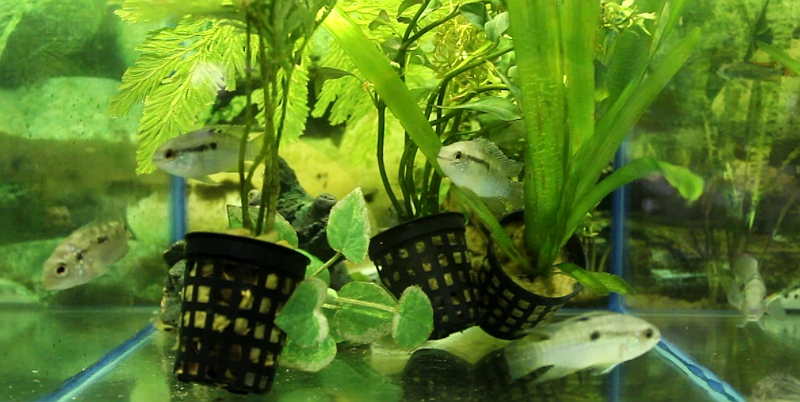
Dwarf Flag Cichlid Key Information
Dwarf Flag Cichlids are a vibrant and colorful species that make a stunning addition to any freshwater aquarium. Males are especially eye-catching with their iridescent blue-green flanks, red chests, and striking flag-like dorsal fins. Females are slightly less colorful but still attractive with yellow-green bodies and clear fins. Both sexes display dark vertical barring that intensifies during spawning.
| Family | Cichlidae |
| Origin | Amazon River basin in South America |
| Price | $5 to $15 each |
| Common Names | Dwarf Flag Cichlid, Umbrella Cichlid, Pinkus’ Cichlid |
| Variants | None |
| Ideal Tank Size | 20 gallons or larger |
| Water Parameters | Temperature: 72-82°F, pH: 5.5-7.5, Hardness: 5-15 dGH |
| Lifespan | 4-8 years |
| Full Size | Males: 2.5 inches, Females: 2 inches |
| Natural Environment | Sluggish tributaries and floodplains with dense vegetation |
| Behavior | Generally peaceful, can be territorial when breeding |
| Habitat Preference | Middle water column, among plants and driftwood |
| Aquarium Decoration | Densely planted with open swimming areas, driftwood, smooth rocks |
| Ideal Tank Mates | Other peaceful fish like tetras, rasboras, corydoras catfish, bristlenose plecos |
| Fish to Avoid | Large, aggressive fish that may bully or eat them |
| Best Foods/Diet | Quality flake/pellet food, live/frozen brine shrimp, daphnia, bloodworms |
| Disease | Susceptible to common diseases if stressed, good care prevents most issues |
| Sex-Switch | No sex changing abilities |
| Gender Differences | Males are larger and more colorful with pointed dorsal fins |
| Care Level | Easy to moderate, good for beginner to intermediate aquarists |
| Breeding Level | Moderate, will readily spawn in a well-maintained aquarium |
Ideal Tank Mates for Dwarf Flag Cichlid
To ensure the well-being of your Dwarf Flag Cichlids, it is crucial to carefully select tank mates that are peaceful and of a similar size, and that flourish in similar water conditions. It is wise to steer clear of larger, aggressive species that may pose a threat to or prey on the smaller cichlids. Allow me to present to you a splendid selection of 10 ideal tank mates for your Dwarf Flag Cichlids, each possessing their own distinctive qualities and impressive compatibility.
1. Neon Tetras (Paracheirodon innesi)
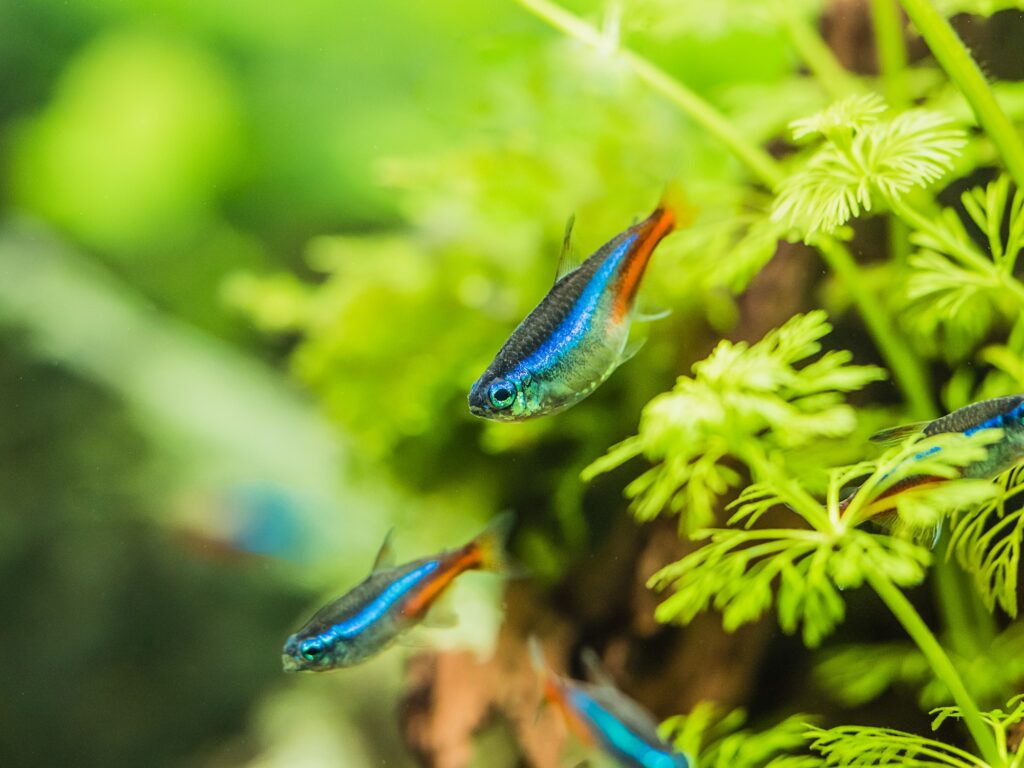
Neon Tetras are a classic choice for community tanks and make excellent companions for Dwarf Flag Cichlids. These small, colorful fish occupy the upper levels of the aquarium, providing a beautiful contrast to the cichlids’ mid-level swimming habits. Neons are peaceful, easy to care for, and thrive in similar water parameters to Dwarf Flags.
| Common Names | Neon Tetra |
| Price Range | $1 to $3 |
| Care Level | Easy |
| Behavior | Peaceful |
| Life Span | 5-8 years |
| Max Size | 1.5 inches |
2. Rummy Nose Tetras (Hemigrammus bleheri)
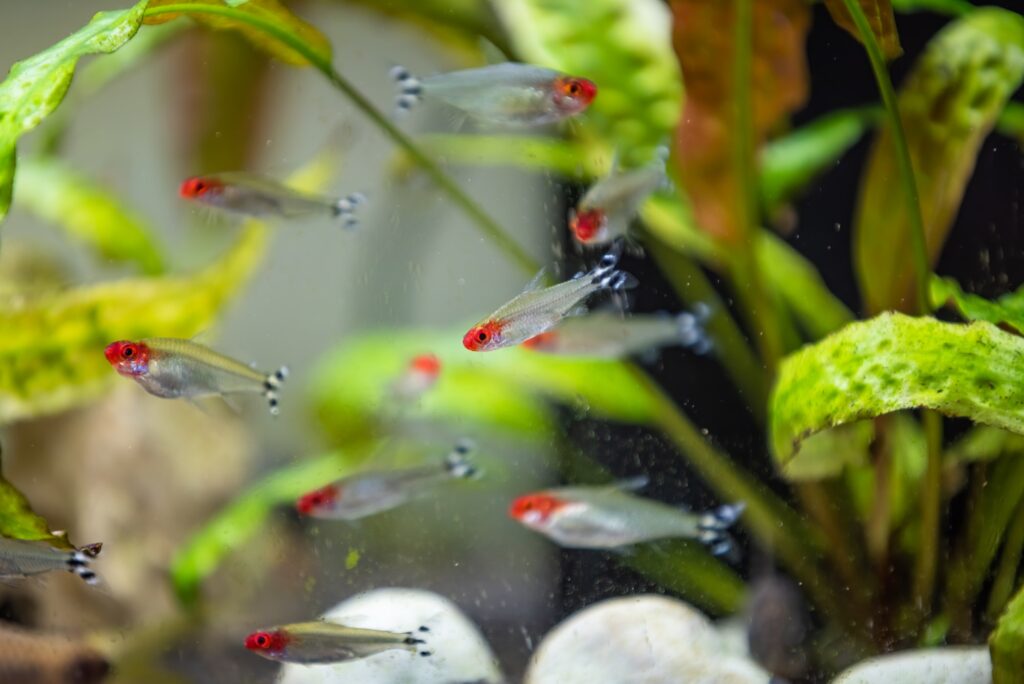
Rummy Nose Tetras are another great option for Dwarf Flag Cichlid tank mates. These active, schooling fish are known for their bright red noses and peaceful temperament. They prefer slightly cooler water than the cichlids but can adapt to a range of conditions. Rummy Noses add movement and interest to the upper levels of the tank.
| Common Names | Rummy Nose Tetra, Firehead Tetra |
| Price Range | $2 to $4 |
| Care Level | Easy to Moderate |
| Behavior | Peaceful |
| Life Span | 5-6 years |
| Max Size | 2 inches |
3. Harlequin Rasboras (Trigonostigma heteromorpha)
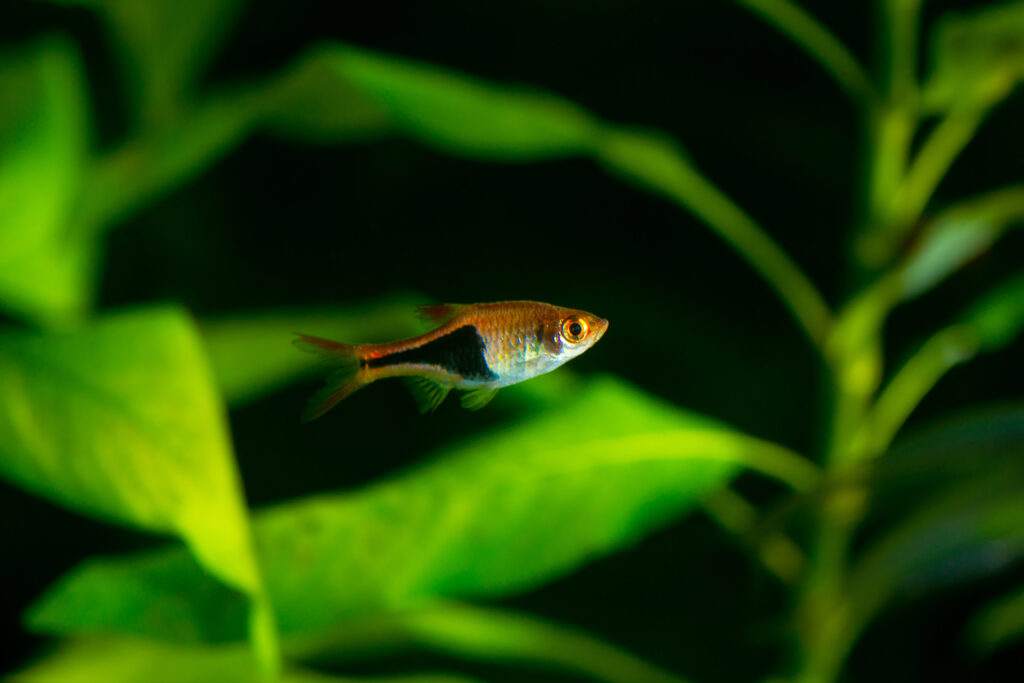
Harlequin Rasboras are a stunning addition to any community aquarium with their vibrant orange and black coloration. These small, peaceful fish are native to Southeast Asia and thrive in the same conditions as Dwarf Flag Cichlids. Harlequins are active swimmers that prefer to be kept in schools of 6 or more individuals.
| Common Names | Harlequin Rasbora, Red Rasbora |
| Price Range | $2 to $4 |
| Care Level | Easy |
| Behavior | Peaceful |
| Life Span | 5-8 years |
| Max Size | 2 inches |
4. Corydoras Catfish (Corydoras spp.)
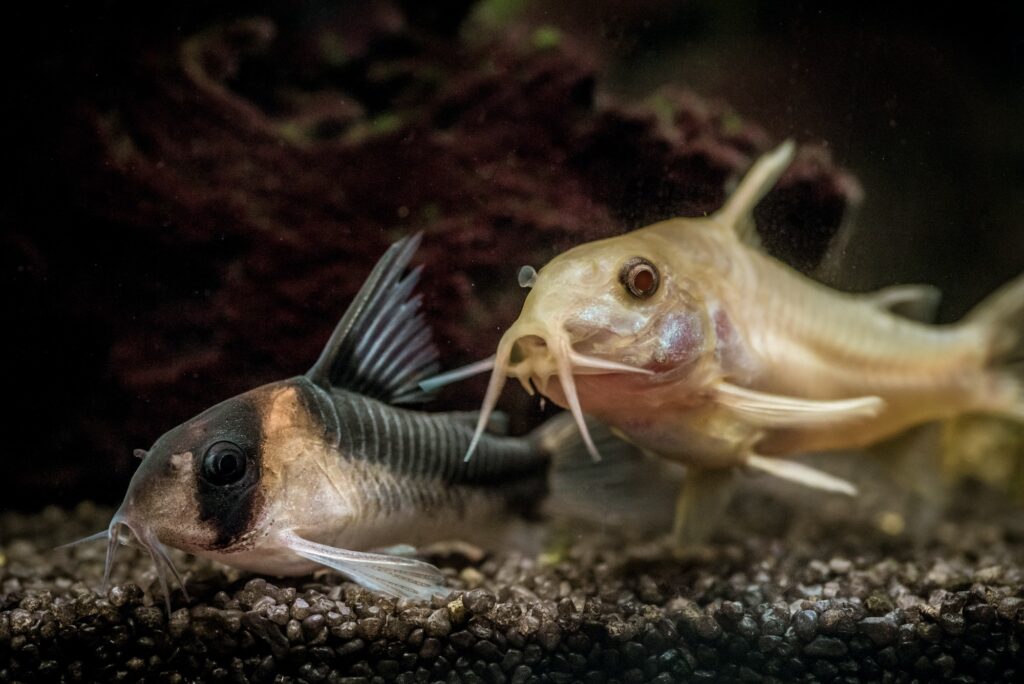
Corydoras Catfish are a diverse group of bottom-dwelling fish that make fantastic tank mates for Dwarf Flag Cichlids. These peaceful scavengers help keep the aquarium clean by foraging for leftover food and debris. Corydoras come in many different colors and patterns, adding visual interest to the lower levels of the tank.
| Common Names | Cory Catfish, Cories |
| Price Range | $3 to $10 |
| Care Level | Easy |
| Behavior | Peaceful |
| Life Span | 5-10 years |
| Max Size | 1-3 inches |
5. Otocinclus Catfish (Otocinclus spp.)
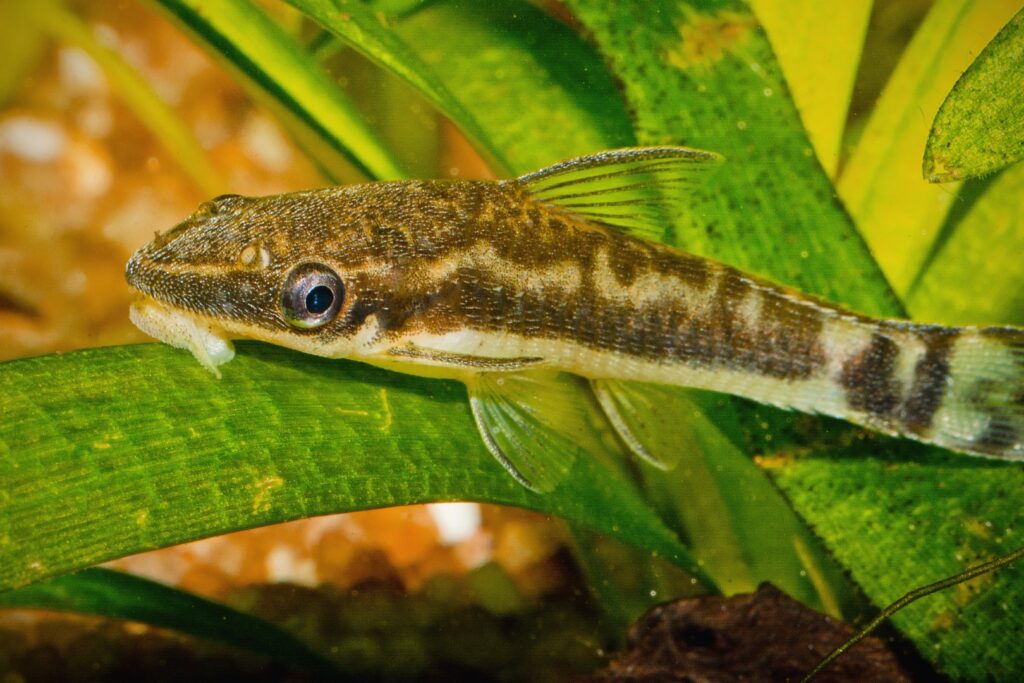
Otocinclus Catfish, or “Otos,” are small, peaceful algae eaters that make excellent tank mates for Dwarf Flag Cichlids. These hardworking fish spend their days grazing on algae and biofilm, helping to keep the aquarium clean and healthy. Otos are social fish that do best in groups of 4 or more.
| Common Names | Oto Catfish, Dwarf Suckermouth Catfish |
| Price Range | $2 to $5 |
| Care Level | Easy to Moderate |
| Behavior | Peaceful |
| Life Span | 3-5 years |
| Max Size | 2 inches |
6. Bristlenose Plecos (Ancistrus spp.)
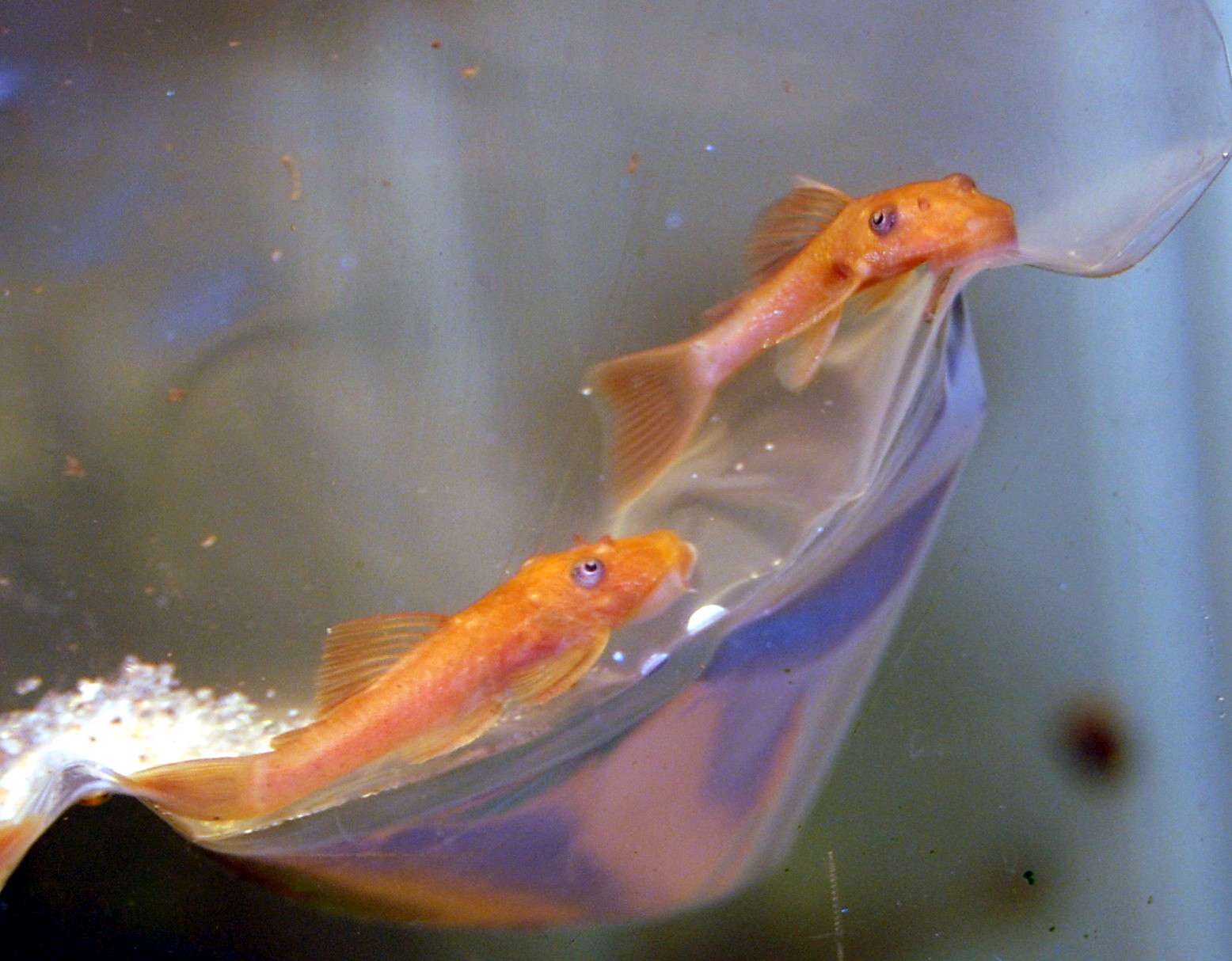
Bristlenose Plecos are another excellent algae-eating option for Dwarf Flag Cichlid tanks. These peaceful catfish have unique “bristles” on their noses and come in a variety of colors and patterns. Bristlenoses are hardy, easy to care for, and will help keep the aquarium free of excessive algae growth.
| Common Names | Bristlenose Pleco, Bushynose Pleco |
| Price Range | $5 to $15 |
| Care Level | Easy |
| Behavior | Peaceful |
| Life Span | 5-10 years |
| Max Size | 5 inches |
7. Cherry Barbs (Puntius titteya)
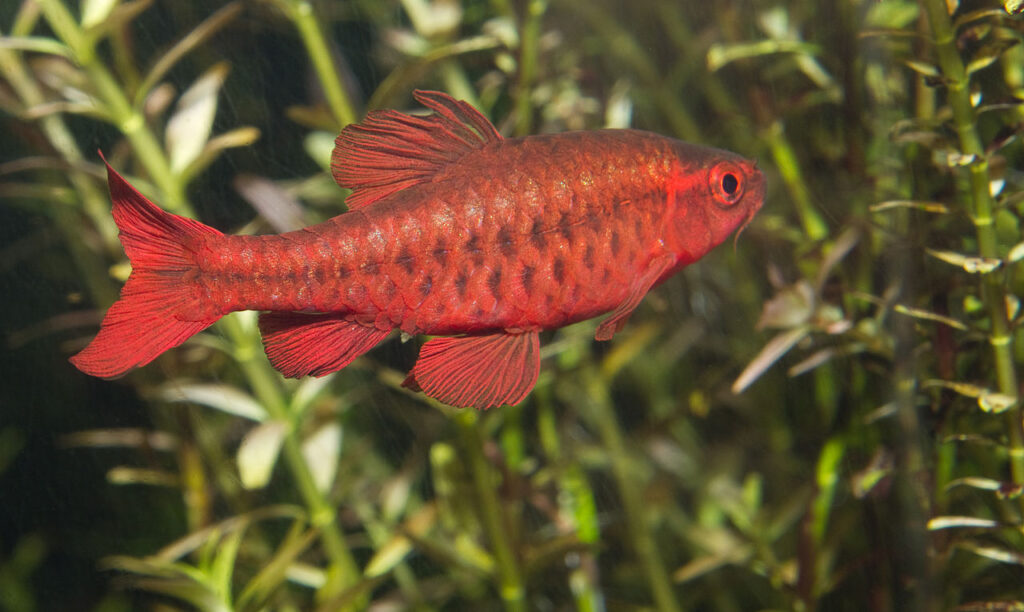
Cherry Barbs are colorful, peaceful fish that make great companions for Dwarf Flag Cichlids. Males are a vibrant red color, while females are more subdued with a golden-brown hue. These active fish prefer to be kept in schools of 6 or more and occupy the middle to upper levels of the aquarium.
| Common Names | Cherry Barb, Red Barb |
| Price Range | $2 to $4 |
| Care Level | Easy |
| Behavior | Peaceful |
| Life Span | 4-6 years |
| Max Size | 2 inches |
8. Celestial Pearl Danios (Celestichthys margaritatus)
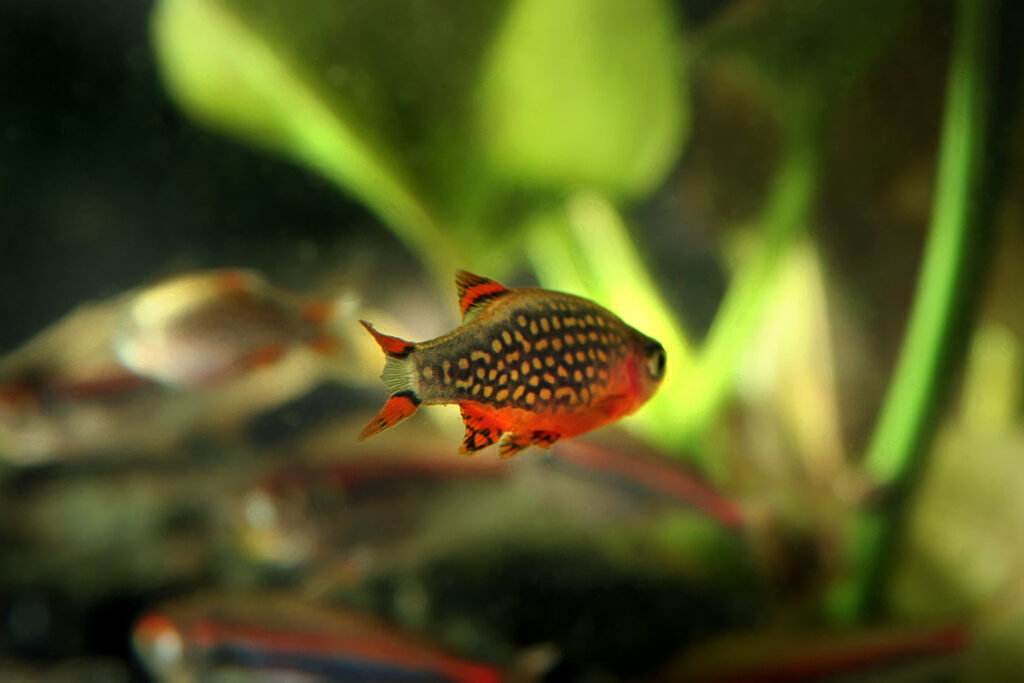
Celestial Pearl Danios, also known as Galaxy Rasboras, are tiny, colorful fish that make excellent tank mates for Dwarf Flag Cichlids. These peaceful, schooling fish have a unique spotted pattern that resembles a starry night sky. CPDs prefer densely planted tanks with plenty of hiding spots and do best in groups of 6 or more.
| Common Names | Celestial Pearl Danio, Galaxy Rasbora |
| Price Range | $4 to $8 |
| Care Level | Moderate |
| Behavior | Peaceful |
| Life Span | 3-5 years |
| Max Size | 1 inch |
9. Ember Tetras (Hyphessobrycon amandae)
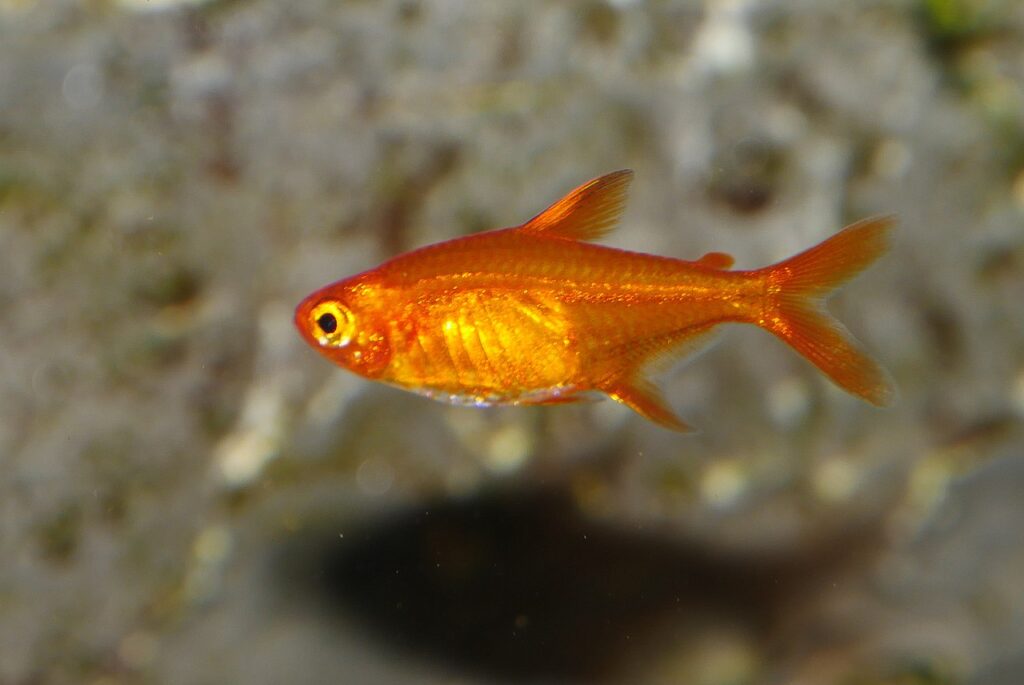
Ember Tetras are small, peaceful fish with a vibrant orange-red coloration that complements the colors of Dwarf Flag Cichlids. These active schooling fish occupy the middle to upper levels of the aquarium and thrive in similar water conditions to the cichlids. Ember Tetras are easy to care for and do best in groups of 8 or more.
| Common Names | Ember Tetra, Amanda’s Tetra |
| Price Range | $2 to $4 |
| Care Level | Easy |
| Behavior | Peaceful |
| Life Span | 3-5 years |
| Max Size | 1 inch |
10. Kuhli Loaches (Pangio kuhlii)
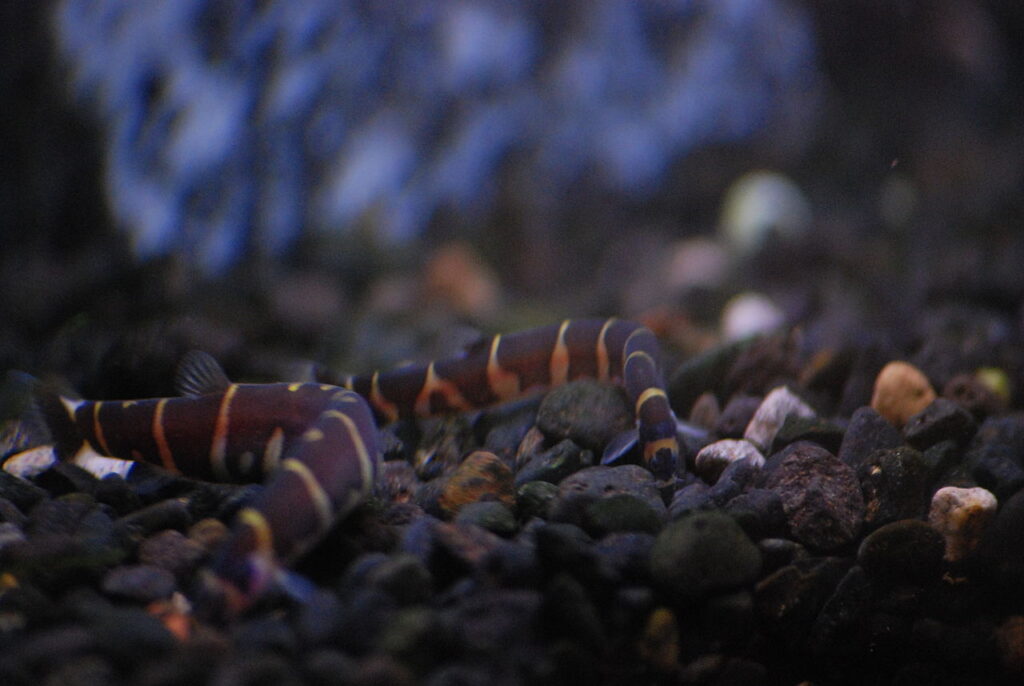
Kuhli Loaches are unique, eel-like fish that make interesting tank mates for Dwarf Flag Cichlids. These nocturnal bottom-dwellers have a peaceful temperament and help keep the substrate clean by scavenging for leftover food. Kuhli Loaches are social fish that prefer to be kept in groups of 3 or more and appreciate a sand or fine gravel substrate to burrow in.
| Common Names | Kuhli Loach, Coolie Loach |
| Price Range | $3 to $6 |
| Care Level | Easy to Moderate |
| Behavior | Peaceful |
| Life Span | 8-10 years |
| Max Size | 4 inches |
By choosing a variety of peaceful, compatible tank mates from this list, you can create a diverse and visually stunning community aquarium centered around your Dwarf Flag Cichlids.
FAQs about Dwarf Flag Cichlid
How many Dwarf Flag Cichlids should I keep together?
It’s best to keep Dwarf Flag Cichlids in pairs or small groups of one male and several females. A single pair can be kept in a 20-gallon tank, while a group of 5-6 individuals will need a larger 30-40 gallon aquarium to provide enough space and minimize aggression.
Are Dwarf Flag Cichlids hard to breed?
Dwarf Flag Cichlids are relatively easy to breed in the home aquarium. Provide a flat rock or cave for spawning, maintain good water quality, and offer a varied diet to condition the breeding pair. The female will lay eggs on the chosen surface, and both parents will take turns guarding and fanning the eggs until they hatch.
Can Dwarf Flag Cichlids be kept with shrimp?
While Dwarf Flag Cichlids are generally peaceful, they may prey on small shrimp species like Cherry Shrimp or Amano Shrimp. However, larger shrimp species such as Bamboo Shrimp or Vampire Shrimp can make suitable tank mates as they are too large to be considered food.
Do Dwarf Flag Cichlids need a heater?
Yes, Dwarf Flag Cichlids are tropical fish that require a consistent water temperature between 72-82°F (22-28°C). Use an aquarium heater to maintain a stable temperature within this range and avoid sudden fluctuations that can stress the fish.
How often should I feed my Dwarf Flag Cichlids?
Feed your Dwarf Flag Cichlids small amounts of food 2-3 times per day. Offer a variety of high-quality dry foods like flakes or micropellets, and supplement with live or frozen foods such as brine shrimp, daphnia, or bloodworms. Avoid overfeeding, as excess food can lead to poor water quality and health issues.
Can Dwarf Flag Cichlids live with African Cichlids?
No, it is not recommended to keep Dwarf Flag Cichlids with African Cichlids. Most African Cichlid species are much larger, more aggressive, and require different water parameters than the peaceful South American Dwarf Flag Cichlids. Mixing these two groups can lead to stress, injury, or even death for the smaller fish.
How can I tell if my Dwarf Flag Cichlids are stressed?
Signs of stress in Dwarf Flag Cichlids include loss of appetite, hiding, rapid breathing, clamped fins, and abnormal swimming behavior. Stress can be caused by poor water quality, inappropriate tank mates, overcrowding, or sudden changes in their environment. If you notice these signs, check your water parameters and address any potential stressors.
Do Dwarf Flag Cichlids need live plants in their aquarium?
While live plants are not essential for Dwarf Flag Cichlids, they are highly recommended. These fish naturally occur in heavily vegetated habitats, and live plants provide cover, reduce stress, and improve water quality. Choose hardy, fast-growing plant species like Java Fern, Anubias, or Amazon Sword to create a lush, natural-looking aquascape.
How long do Dwarf Flag Cichlids take to reach full size?
Dwarf Flag Cichlids are relatively slow-growing fish that may take 6 months to a year to reach their full adult size. Provide a balanced diet, maintain good water quality, and perform regular tank maintenance to ensure your fish grow at a healthy rate and reach their maximum potential size.
Can Dwarf Flag Cichlids be kept in a planted tank with CO2 injection?
Yes, Dwarf Flag Cichlids can thrive in a well-maintained planted tank with CO2 injection. The additional carbon dioxide will promote lush plant growth, creating a beautiful, natural habitat for your fish. Just be sure to monitor your CO2 levels carefully and provide adequate surface agitation to prevent oxygen depletion, which can be harmful to your fish.
Leave a Reply